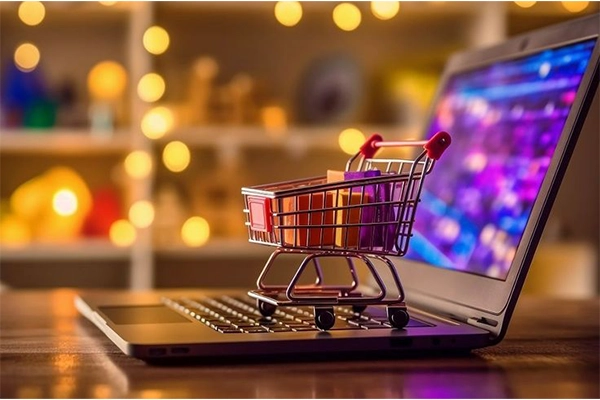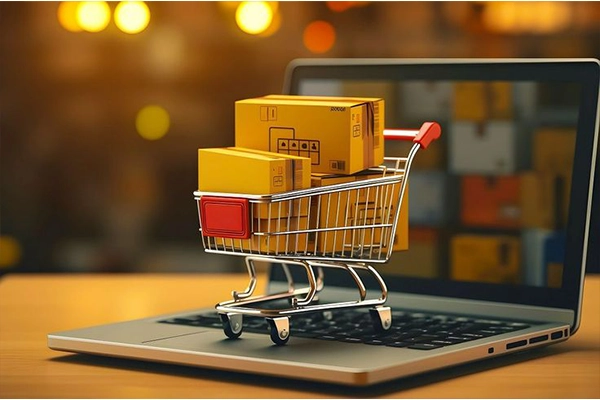Online shopping vs offline shopping is a topic that has gained significant attention in recent years as consumer habits continue to evolve. This comparison examines the merits and drawbacks of both shopping methods, helping consumers make informed decisions about their purchasing preferences. The convenience factor is a major advantage of online shopping. With just a few clicks, customers can browse through a vast array of products from the comfort of their homes, eliminating the need for travel and saving time. Online shopping also offers accessibility, allowing consumers to make purchases at any time that suits them. However, this convenience comes at the cost of losing the tactile experience that offline shopping provides.
Offline shopping, on the other hand, offers a more immersive and social experience. When engaging in offline shopping, customers can physically examine products, try on clothes, and receive immediate assistance from sales representatives. This hands-on approach can be particularly beneficial for certain types of purchases where quality and fit are crucial. Additionally, offline shopping can be a social activity, providing an opportunity for outings with friends or family.
Price comparison is another aspect where online shopping often has an edge. Many e-commerce platforms offer tools that allow customers to easily compare prices across different retailers. Online shopping also frequently provides access to exclusive deals and discounts. In contrast, offline shopping may require more effort to find the best deals, though it does offer the advantage of immediate price negotiation in some cases.
The issue of product returns and customer service presents different challenges for online and offline shopping. While many online retailers have improved their return policies, the process can still be more cumbersome compared to returning items to a physical store. Offline shopping typically offers more immediate resolution for product issues or concerns. However, online shopping has made significant strides in customer service through features like live chat support and detailed product reviews from other customers.

The Evolution of Retail
The retail landscape has undergone a dramatic transformation in recent years, largely driven by technological advancements. The debate of online shopping vs offline shopping has become increasingly complex as consumers seek the best of both worlds in their purchasing experiences.
The Rise of E-commerce
E-commerce has revolutionized the way people shop, offering unprecedented convenience and access to a global marketplace. The online shopping vs offline shopping comparison initially favored digital platforms due to their vast product selection and 24/7 availability.
Personalization and Data Analytics
Both online and offline retailers are leveraging data analytics to offer personalized shopping experiences. The online shopping vs offline shopping debate now extends to which platform can provide the most tailored recommendations and services.
The Role of Mobile Technology
The role of mobile technology in retail has been transformative, effectively bridging the gap between online shopping vs offline shopping experiences. Smartphones and tablets have become indispensable tools for consumers, offering a seamless connection to both digital and physical retail environments. Mobile apps now serve as powerful platforms that enhance the in-store experience by providing product information, personalized recommendations, and even augmented reality features that allow customers to visualize products in real-world settings.
Simultaneously, these apps have simplified online purchasing, making it possible for consumers to shop from anywhere at any time. The integration of mobile technology in the retail landscape has led to innovative features such as mobile payments, digital loyalty programs, and location-based offers, further blurring the lines between online shopping vs offline shopping. This convergence has given rise to new shopping behaviors, such as “showrooming” (examining products in-store before purchasing online) and “webrooming” (researching online before buying in-store), highlighting the increasingly intertwined nature of digital and physical retail channels in the mobile era.
Logistics and Fulfillment Innovations
The evolution of online shopping vs offline shopping has spurred innovations in logistics and fulfillment. Same-day delivery, click-and-collect services, and in-store returns for online purchases are now common features in the retail landscape.
Social Commerce and Community Building
Social media platforms have introduced new dimensions to the online shopping vs offline shopping discussion. While e-commerce leverages social proof and influencer marketing, physical stores are focusing on creating community spaces and experiential retail.

Sustainability and Ethical Considerations
The online shopping vs offline shopping debate has expanded to include sustainability concerns. Consumers are increasingly considering the environmental impact of their shopping habits, influencing both online and offline retail strategies.
The Future of Retail
The future of retail is poised for a revolutionary transformation as technology continues to advance at an unprecedented pace. The traditional dichotomy of online shopping vs offline shopping is rapidly dissolving, giving way to a more integrated and immersive shopping experience. Virtual and augmented reality technologies are set to redefine how consumers interact with products, allowing them to visualize items in their own spaces before making a purchase, regardless of whether they’re shopping online or in a physical store.
AI-powered assistants are expected to play a crucial role in personalizing the shopping journey, offering tailored recommendations and seamless support across both digital and physical channels. This evolution will further blur the lines between online shopping vs offline shopping, creating a unified retail ecosystem where consumers can effortlessly transition between virtual and physical shopping environments.
Emerging technologies like blockchain and the Internet of Things (IoT) are likely to enhance transparency in supply chains and enable more efficient inventory management, benefiting both online and offline retail operations. As these innovations continue to merge the digital and physical realms, retailers will need to adapt their strategies to provide a cohesive and engaging shopping experience that transcends the traditional boundaries of online and offline commerce.
Conclusion
In the modern retail world, the boundary between online and offline shopping is increasingly blurring. The debate of online shopping vs offline shopping is moving towards an integrated and comprehensive approach that combines the advantages of both methods. Emerging technologies such as augmented reality, artificial intelligence, and mobile applications are guiding the shopping experience towards a seamless and personalized journey. In the future, the most successful retailers will be those who can effectively bridge the gap between digital and physical commerce, offering customers a cohesive and flexible experience.










